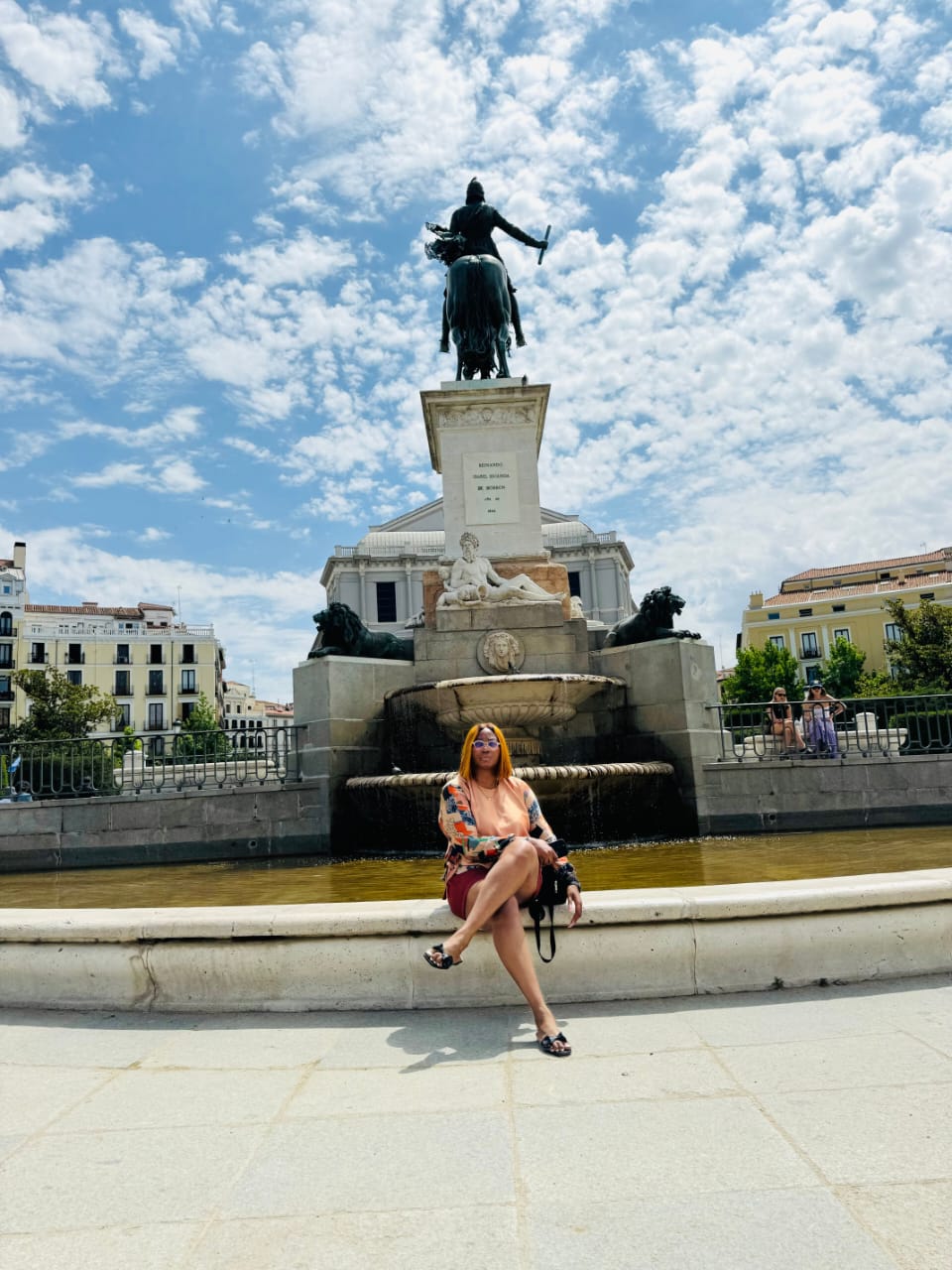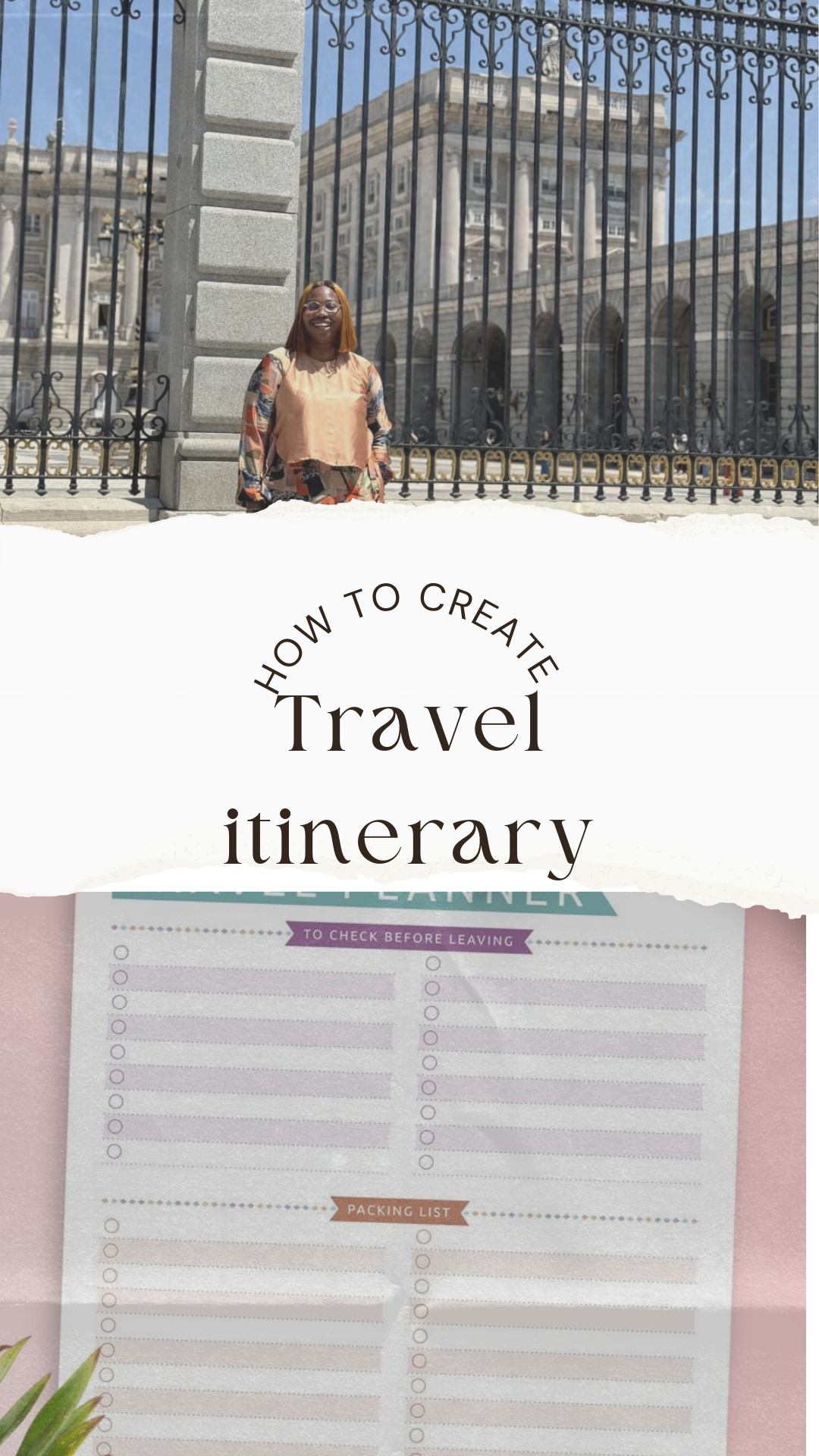Excited about your trip but don't know where to begin? I've got you. Having been in your shoes once, I understand how stressful and overwhelming planning a trip is and as a constant traveller, it's something I've quickly learnt to manoeuvre like a pro.
You can be a pro too when it comes to planning your trips and ensuring a smooth experience. The simple hack is creating a detailed travel itinerary. A well-organised and comprehensive travel itinerary will give you so much service to enjoy your trip and avoid unnecessary stress.
Creating a travel itinerary is easy and here is how to create your itinerary step by step in an organised way.
Choosing Your Destination
The first step in planning any trip is deciding where to go. Start by researching potential destinations that match your interests and preferences. Consider factors such as your budget, the type of activities you enjoy, and the season you plan to travel. Whether you're looking for a beach getaway, a cultural city tour, or an adventurous trek, there are plenty of options to choose from.
When choosing a destination, also think about the logistics. How far is it from your home? How much will flights cost? What is the local currency? These questions will help narrow down your choices and find the perfect destination for your trip.
Setting a Budget
Once you've chosen your destination, the next step is to set a budget. Start by estimating the major costs of your trip, such as flights, accommodations, meals, and activities. It's important to be realistic about your spending and include a buffer for unexpected expenses.
To save money, look for deals on flights and accommodations, and consider travelling during the off-season. You can also save by booking in advance, using travel rewards points, and choosing budget-friendly options for meals and activities.
Deciding on Travel Dates
Choosing the right travel dates is crucial for a successful trip. Research the best times to visit your destination, considering factors like weather, tourist seasons, and local events. If you have a flexible schedule, you can take advantage of lower prices and fewer crowds by travelling during the shoulder season.
Also, consider your schedule and commitments. Make sure to choose dates that work for you and any travel companions, allowing enough time to plan and prepare for the trip.
Booking Flights
Booking flights can be one of the most challenging parts of travel planning. To find the best deals, start by using flight comparison websites and setting up alerts for price drops. Be flexible with your travel dates and consider flying midweek, as prices are often lower.
When booking, pay attention to additional fees, such as baggage charges and seat selection costs. Also, make sure to book directly through the airline when possible, as this can offer better customer service and easier changes if needed.
(How to get the best travel deals)
Accommodation Selection
Choosing the right accommodation is key to a comfortable and enjoyable trip. There are many types of accommodations to choose from, including hotels, hostels, vacation rentals, and bed and breakfasts. Consider factors such as location, amenities, and reviews when making your decision.
For a more authentic experience, consider staying in locally-owned accommodations or booking through platforms like Airbnb. This can also offer the opportunity to interact with locals and get insider tips on the best places to visit.

(Types of accommodations: hotels vs. Airbnb)
Planning Transportation
Getting around your destination is an important part of your travel itinerary. Research local transportation options, such as buses, trains, and taxis, and decide whether you need to rent a car. Consider factors like convenience, cost, and the availability of public transport.
In some destinations, renting a car can offer more flexibility and allow you to explore off-the-beaten-path locations. However, it's important to familiarise yourself with local driving laws and conditions before hitting the road.
Creating a Daily Schedule
A well-planned daily schedule ensures you make the most of your time while allowing for flexibility. Start by listing the must-see attractions and activities at your destination, and prioritise them based on your interests. Be sure to include some downtime for relaxation and unexpected discoveries.
When creating your schedule, consider the opening hours of attractions, travel time between locations, and any reservations or tickets you need to book in advance. A balanced itinerary will help you avoid feeling rushed and overwhelmed.
Researching Attractions and Activities
Researching attractions and activities is one of the most enjoyable parts of travel planning. Look for popular tourist spots as well as hidden gems that are off the beaten path. Read travel blogs, watch videos, and ask for recommendations from friends and family.
In addition to sightseeing, consider activities like hiking, cooking classes, or cultural tours that can offer a deeper understanding of the destination. Booking some activities in advance can help you secure spots and save money.

Health and Safety Considerations
Staying healthy and safe while travelling is essential. Research any necessary vaccinations or medications you may need for your destination and pack a basic first aid kit. Be aware of local health risks and take precautions to avoid common travel illnesses.
Safety is also important. Familiarise yourself with the local laws and customs and take steps to protect yourself and your belongings. Always keep important documents and valuables secure, and stay alert in unfamiliar surroundings.
Packing list preparation
Packing efficiently can make a big difference in your travel experience. Start by making a list of essential items, such as clothing, toiletries, and travel documents. Consider the climate and activities at your destination when choosing what to pack.
To save space and avoid overpacking, choose versatile clothing that can be layered, mixed, and matched. Use packing cubes or compression bags to organise your luggage and make it easier to find what you need.
(How to pack properly for your next trip)
Travel Insurance
Travel insurance is an important investment for any trip. It can protect you from unexpected events like trip cancellations, medical emergencies, and lost luggage. When choosing a travel insurance plan, compare coverage options and read the fine print to ensure it meets your needs.
Having travel insurance gives you peace of mind and allows you to enjoy your trip without worrying about potential problems.
Communication and Connectivity
Staying connected while travelling is important for safety and convenience. Research your options for communication, such as local SIM cards or international phone plans. Many destinations offer free Wi-Fi in public areas, which can help you stay connected without incurring high costs.
Consider downloading travel apps that can assist with navigation, translation, and finding local services. These tools can make your trip more enjoyable and stress-free.
Handling Money Abroad
Managing your money while travelling requires some planning. Research the local currency and exchange rates, and decide how you will access money abroad. Options include using credit cards, debit cards, and local ATMs.
To avoid high fees, look for travel-friendly banking options and inform your bank of your travel plans. Keep some cash on hand for emergencies and small purchases, and use a money belt or hidden pouch to keep it secure.
Document Organisation
Keeping your travel documents organised is crucial for a smooth trip. Make copies of important documents, such as your passport, travel insurance, and itinerary, and store them separately from the originals. Use a travel wallet or document organiser to keep everything in one place.
Digital copies of documents can also be helpful. Store them in a secure cloud service or email them to yourself for easy access.

Using Travel Apps and Tools
Technology can greatly enhance your travel experience. Download travel apps that can help with everything from booking flights and accommodations to navigating new cities. Some popular apps include Google Maps, TripAdvisor, and XE Currency.
In addition to apps, consider using travel planning tools like spreadsheets or travel journals to keep track of your itinerary and expenses. These tools can help you stay organised and make the most of your trip.
Even the best-planned trips can encounter problems. Common travel issues include flight delays, lost luggage, and health emergencies. Have a plan in place for dealing with these situations, including emergency contacts and travel insurance information.
Stay calm and flexible, and remember that unexpected challenges can sometimes lead to the most memorable travel experiences.
After your trip, take some time to reflect on your experiences. Organise your photos and souvenirs, and share your stories with friends and family. Consider writing a travel journal or blog to document your memories and inspire future trips.
Reflecting on your trip can also help you learn from your experiences and improve your travel planning skills for next time.
Creating a travel itinerary may seem like a lot of work, but it pays off in a smooth and enjoyable trip. By following these steps, you can plan a trip that fits your interests, budget, and schedule. Start planning today, and get ready for an unforgettable adventure!




